This wonderful Cornish workshop and museum is dedicated to the legacy of studio pottery trailblazer Bernard Leach
Become an instant expert on…the textile visionaries of post-war modern art
Become an instant expert on…the textile visionaries of post-war modern art
14 Feb 2023
Modernist artists pushed boundaries, not least with their sizzling designs for textiles, which played a key role in the story of modern art. Our expert, Ashley Gray, reveals the top things to know about those fabrics and their makers
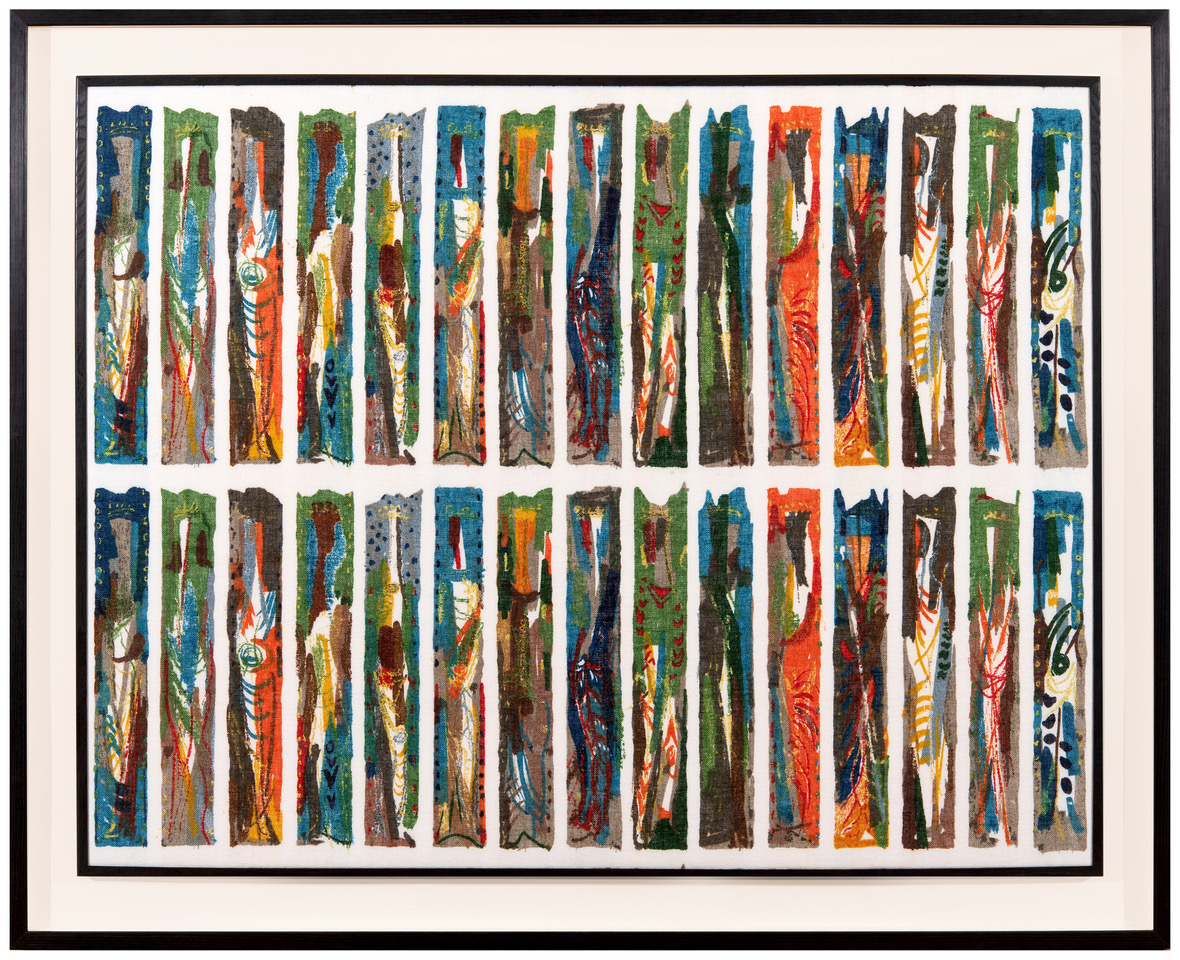
Arundel, 1960, by John Piper (1903–1992); a woven linen by Arthur Sanderson & Sons
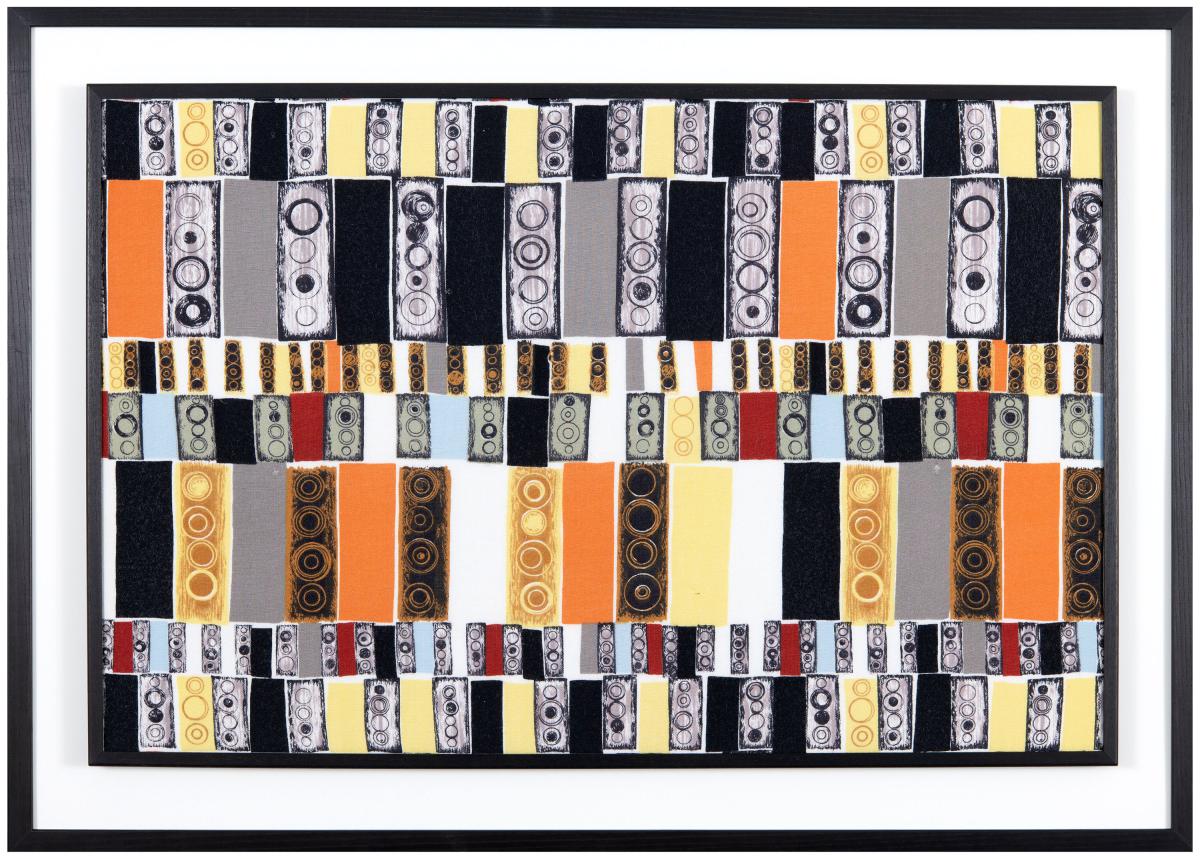 Untitled (Traffic Light), 1952, by the influential textile designer Jacqueline Groag (1903–1986) / Roller Printed Rayon, David Whitehead Ltd
Untitled (Traffic Light), 1952, by the influential textile designer Jacqueline Groag (1903–1986) / Roller Printed Rayon, David Whitehead Ltd
1. STARTING OUT
From the earliest times textiles have provided a dramatic backdrop to Britain’s heritage, influence and creativity. Textiles were, after all, one of the earliest drivers of Britain’s economy. Since the 14th century the Woolsack, now the seat of the Lord Speaker in the House of Lords, has been testament to the importance of the wool trade and our historic association with textiles. For centuries fabrics have clothed, warmed and identified us. They bring character and vitality to our homes and, through fashion, communicate our personality and ambitions.
Yet throughout the history of art it has been rare for those who consider themselves painters to work with textiles, other than on the very canvas they use to make their paintings. But the rise of Modernism in the early 20th century challenged these taboos, allowing artists to experiment in a new, versatile and exciting medium.
Influences from the continent such as the Ballet Russes, the Wiener Werkstätte (the Vienna Workshop) and later the Bauhaus energised British design through the eyes and hands of émigrés forced to flee fascism. The story of the evolution of textile design in Britain weaves together modern art movements, modern artists and visionary textile designers that put British textiles at the forefront of international design.
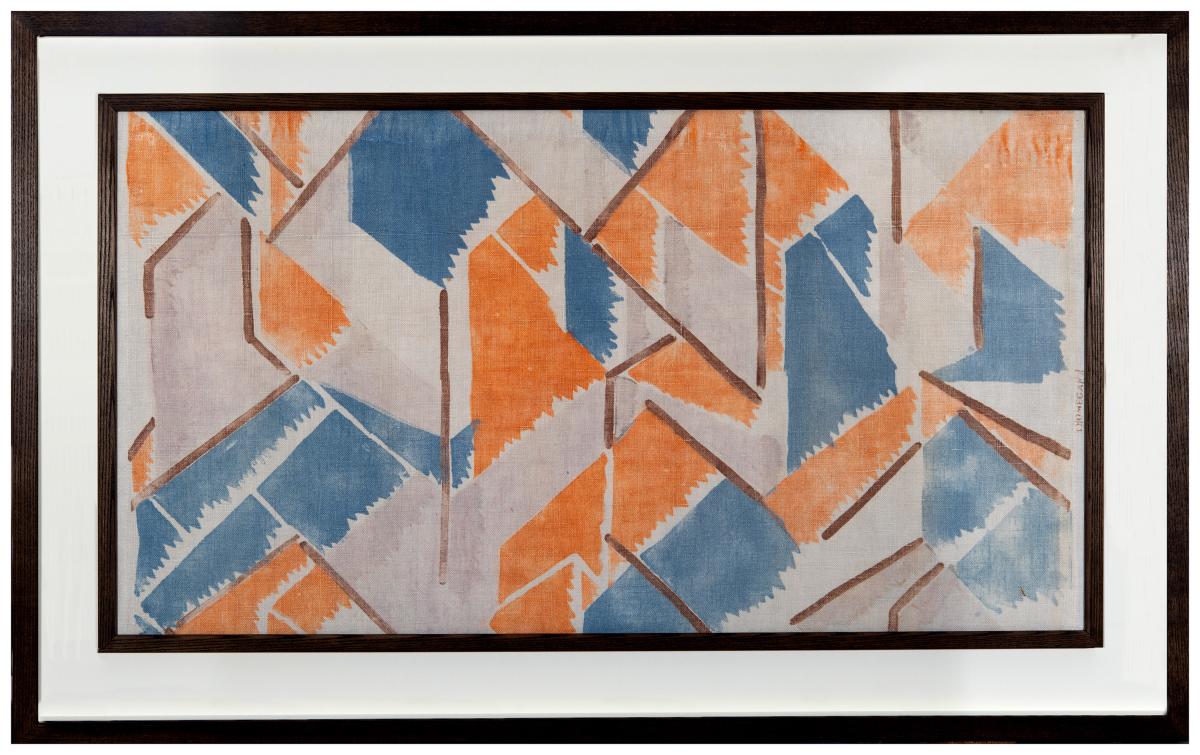
A printed linen panel entitled Maud by Vanessa Bell (1879–1961) and Roger Fry (1866–1934)
2. KEY FIGURES ON THE LANDSCAPE
The first move towards bridging the gap between the fine and decorative arts in Britain began with the Arts and Crafts movement. This was when William Morris rejected the commercial production of textiles and returned to hand loom weaving and block printing.
The painter, art critic and Bloomsbury Group member Roger Fry swiftly followed this with the launch of his inspirational Omega workshop. Though short-lived (1913–1919), the workshop was a laboratory of ideas that revolutionised British art and design. Bloomsbury Group artists Duncan Grant and Vanessa Bell produced stunning designs for Omega, of which Maud by Bell, shown here, featured in Fry’s 1917 painting of his lover Nina Hamnett.
The painter, art critic and novelist Wyndham Lewis also played a part in this story. His short-lived Rebel Art Centre, founded in 1914, produced dramatic textiles; in addition it became the headquarters of the Vorticist movement.
Then there was Phyllis Barron, an Omega alumni. Originally a painter, she was first introduced to block printing by Staithes Group artist Fred Mayor, who bought some old printing blocks made by monks during a sketching and painting visit to Normandy. Barron had studied at the Slade and became a member of The London Group along with Paul Nash, Jacob Epstein and Augustus John. But it was textiles and developing dyes that fascinated her. Her designs were firmly rooted in Modernism. She was both inspired by and worked closely with the legendary hand weaver Ethel Mairet.
Dorothy Larcher, who was to become Barron’s companion and business partner, had attended Westminster School of Art with Mairet’s future husband Philip. Larcher brought a knowledge of the richness and depth of Indian textiles and a more naturalistic design vision. The hand block printed designs of Baron and Larcher were to feature in many a stylish interior during the 1920s and 30s.
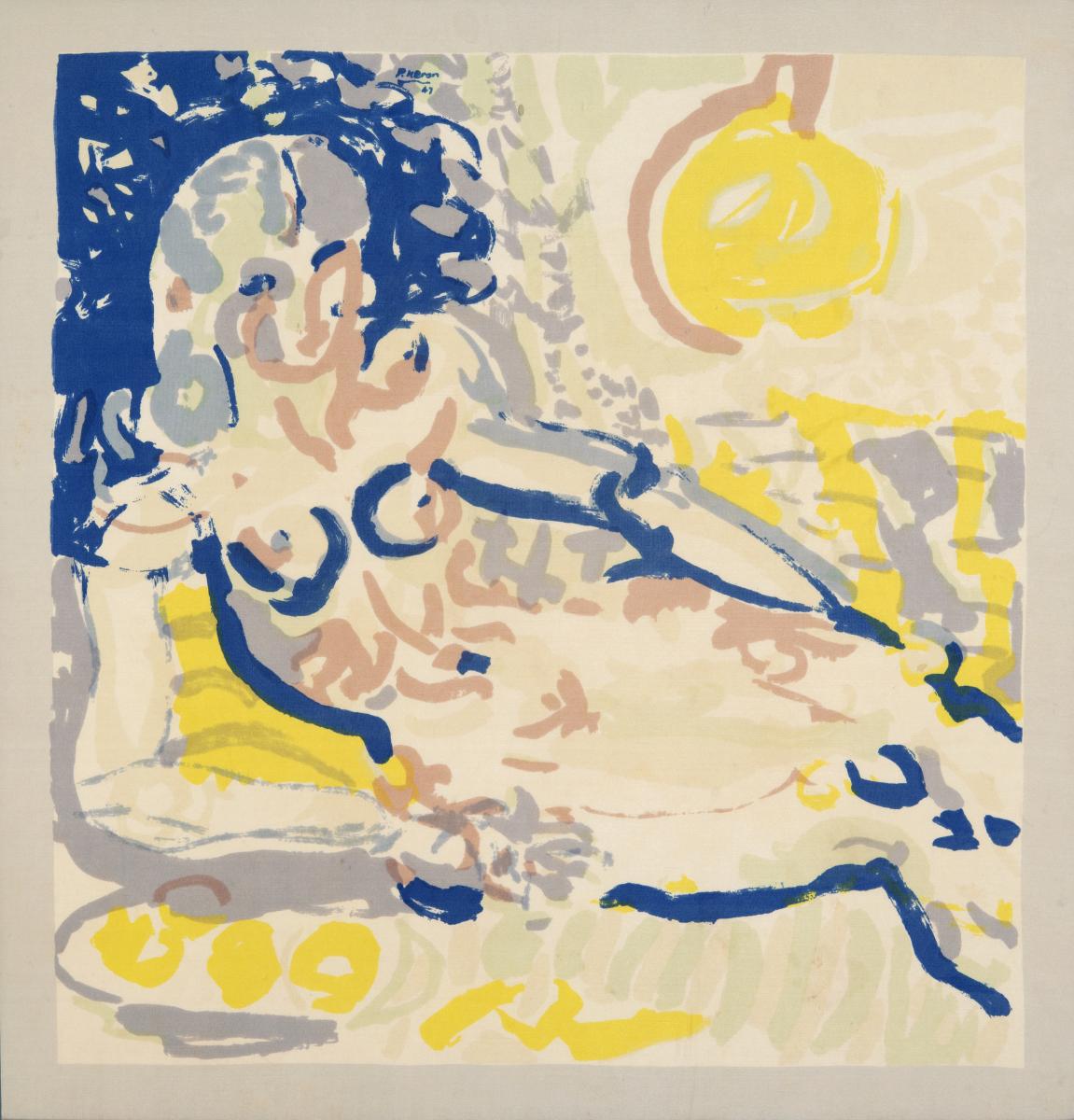
Nude, 1947, by Patrick Heron (1920–1999), a Cresta Silks silkscreen in colour
3. THE STAND OUT COMPANIES
Modernism was a hallmark of the innovative Cryséde, a small silk printing company founded in 1920 in Cornwall by a Yorkshire mill owner’s son, the artist and businessman Alec Walker. Walker had a great eye for modern art and had already commissioned the celebrated artist and poster designer Edward McKnight Kauffer to design posters for his other company, Vigil Silk, in 1919.
The designer, illustrator and artist Ernest Proctor and his artist wife Dod encouraged Walker’s love of painting and introduced him to Fauvist Raoul Dufy, who was experimenting with block printing with designer Paul Poiret. Dufy’s work was to have an influence on Walker’s own artistic style, which in turn was used in Cryséde’s designs.
As Cryséde flourished Walker asked fellow Yorkshireman Tom Heron (a prime figure in the Leeds Art Club, a radical group who supported modern art) to join the company. Heron was to bring an enlightened business discipline that strengthened and widened Cryséde’s appeal.
When Heron later broke with Cryséde, he founded Cresta Silks in Welwyn Garden City. As a follower of the Leeds Art Club, he was close to the avant-garde figures of the day. As a result he revolutionised the interwar fashion world by commissioning textile designs from Paul Nash, Graham Sutherland and Cedric Morris. Edward McKnight Kauffer also produced promotional designs and logos, while across the country shop fronts were modelled by the Modernist Unit One architect Wells Coates.
Heron was appointed to the Board of Trade and played an important role in the wartime development of the Utility Clothing Scheme, commissioning designers such as Hardy Amies, Edward Molyneux and Norman Hartnell. After World War II his son Patrick became principal designer for the firm. Cresta featured in the groundbreaking Britain Can Make It exhibition at the Victoria & Albert Museum in 1946. When Cryséde closed, Cresta Silks purchased their blocks, which they continued to use. They ceased trading in the late 1970s. Patrick Heron, famously, went on to become one of the most celebrated artists of the St Ives School.
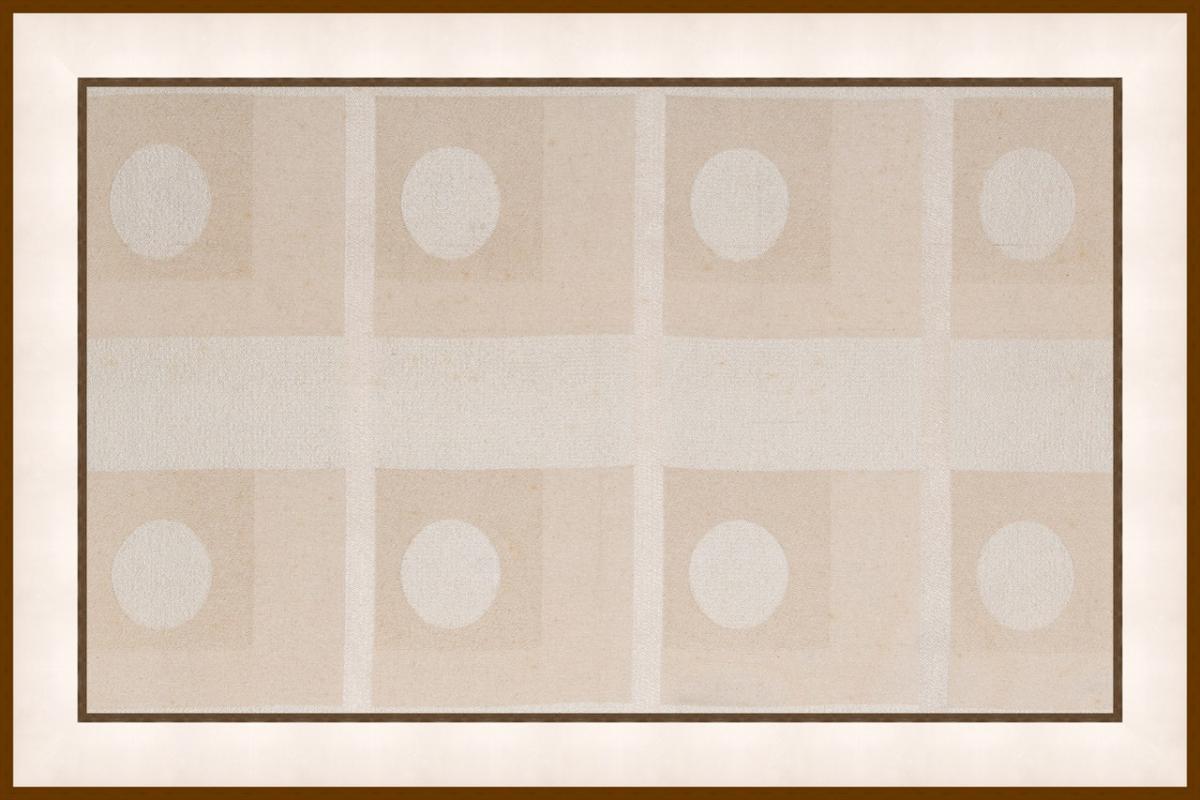 Vertical, 1937 by Ben Nicholson (1894–1992), jacquard woven rayon, cotton and cotton gimp from Edinburgh Weavers
Vertical, 1937 by Ben Nicholson (1894–1992), jacquard woven rayon, cotton and cotton gimp from Edinburgh Weavers
4. FABRICS FOR THE HOME AND PERSON
Edinburgh Weavers was launched in 1928 as the creative ‘think-tank’ of Morton Sundour Fabrics, one of Britain’s most influential textile businesses.
Alistair Morton was appointed by James Morton, his father, (a follower of William Morris and John Ruskin) to take the helm of this new creative studio in 1931.
Morton was to fuse modern art with textile design, keeping it in step with contemporary living. He worked with the most exciting and powerful modern artists including Ben Nicholson, William Scott, Elisabeth Frink, Keith Vaughan and Alan Reynolds. Fabric runs, using both traditional and more innovative modern fibres, were kept short and exclusive, allowing homes to be furnished with groundbreaking contemporary art through textile design.
While Edinburgh Weavers focused on original fabrics for the home, Czech émigrés Zika and Lida Ascher broadened the horizon of artist textiles yet further.
The husband and wife team shared a passion for modern art and became leading figures in British fabric design. Zika had grown up with textiles; his family ran prestigious luxury fabric stores in Prague. Forced to flee their homeland, they were initially commissioned for designs by Edward Molyneux. Their first artist textile exhibition was with Henry Moore at the Dorchester in 1945. By 1946 they were working with parachute nylon, redesigning it as couture for House of Worth.
Then, in 1947, came the famous ‘Ascher Squares’ – a brilliantly simple concept, where leading artists from Nicholson to Matisse and Picasso were invited to design artworks for printing on a silk square. The scarves were framed and presented at The Lefevre Gallery, as art for the home. The collection was so successful it went on a tour of galleries worldwide. And buyers snapped the scarves up as wearable works of art. Today those squares are highly collectable.
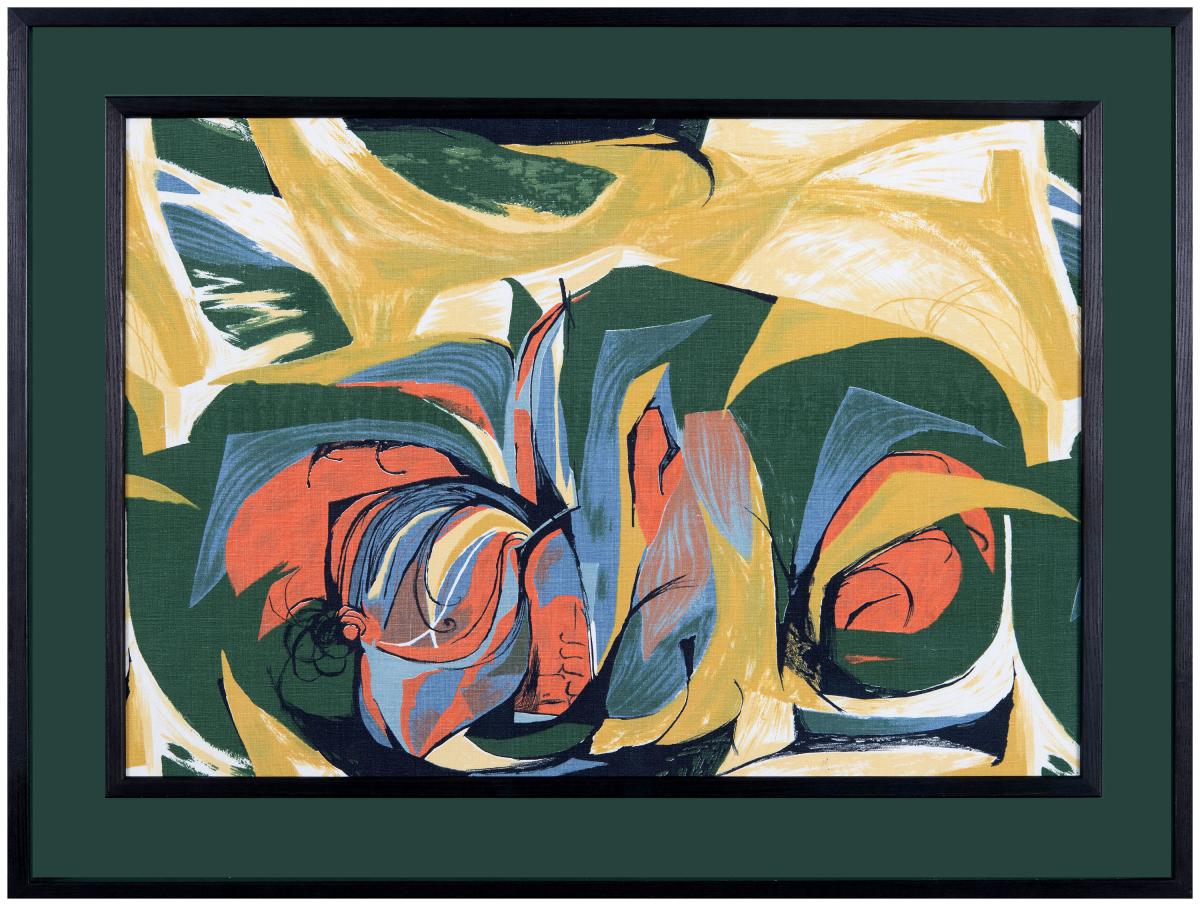 Sweetcorn (Yellow), 1932 by Barbara Brown, a 1958 screen printed cotton from Heal fabrics
Sweetcorn (Yellow), 1932 by Barbara Brown, a 1958 screen printed cotton from Heal fabrics
5. OPENING EYES AND PUSHING BOUNDARIES
The Britain Can Make It exhibition and the 1951 Festival of Britain brought modernist textiles to a watching world.
Both events inspired the public to feature modern art in the home through interior design that complemented the architecture and mood of the day. This was further championed by Hans and Elsbeth Juda’s The Ambassador magazine, which sponsored the show Painting into Textiles at the ICA in October 1953.
The dark days of war were receding and colour, texture and originality were on the rise.
The Dovecot Studios, launched during Morris’s Arts and Crafts movement, made exciting commissions in the 1950s, working with Graham Sutherland, Henry Moore, Stanley Spencer, Cecil Beaton and John Piper. Latterly RB Kitaj, Alan Davie, Patrick Caulfield and Leon Kossoff joined the distinguished list of artists commissioned to produce work expressly for textiles.
John Piper, inspired by Ascher, continued to work with textile houses such as David Whitehead and Sandersons. Liberty and Heal’s would follow too, each commissioning modern artists to create visual masterpieces for new collections. Bloomcraft and Fuller Fabrics in the USA introduced cubists Georges Braque and Pablo Picasso, Fernand Léger and Marc Chagall to a domestic American audience through modern textiles.
The textile designers of the late 1950’s and 70s took inspiration from the likes of Paul Klee and Wassily Kandinsky, from the Abstract Expressionists of the United States and the Op Art movement.
It is a great tribute to the post-war textile visionaries of modern art that these now rare and powerful mid-20th century textiles are sold worldwide as beautiful and historically important examples of the wider works of the artists of the last century. When it comes to artist textiles, what is ‘modern’ has never been more contemporary.
Ashley’s top tips
See
Althea NcNish: Colour is Mine – the first major retrospective of the brilliant Caribbean designer who died in 2020 having achieved international recognition
Until 23 April; The Whitworth, Manchester; whitworth.manchester.ac.uk/
Bernat Klein: Design in Colour
Until 23 April; The National Museum of Scotland, Edinburgh nms.ac.uk/exhibitions-events/exhibitions/national-museum-of-scotland/bernat-klein-design-in-colour/
For more on Klein’s story see our Arts Society feature on him here: theartssociety.org/arts-news-features/colourful-world-textile-genius-bernat-klein
Kaffe Fassett: The Power of Pattern
Until 12 March, followed by Andy Warhol: The Textiles, 31 March–10 September; The Fashion and Textile Museum, London: fashiontextilemuseum.org
Souls Grow Deep like the Rivers: Black Artists from the American South
View examples of beautiful quilts on show in this exhibition.
17 March–18 June; Royal Academy of Arts, London; royalacademy.org.uk
KNITWEAR Chanel to Westwood
Until 11 March, Dovecot Studios, Edinburgh; dovecotstudios.com
Styled by Design
18–23 April; Cromwell Place, 4 Cromwell Place, London; cromwellplace.com
Christ in Glory in the Tetramorph
Graham Sutherland’s famous tapestry; see anytime at Coventry Cathedral, Coventry; coventrycathedral.org.uk
Good Reads
Modern Block Printed Textiles, Alan Powers, ACC Ltd
Disentangling Textiles, Mary Schoeser and Christine Boydell, Middlesex University Press
Henry Moore Textiles, Anita Feldman, Lund Humphries
Alastair Morton and Edinburgh Weavers: Visionary Textiles and Modern Art, Lesley Jackson, V&A
Ascher, The Mad Silkman, Konstantina Hlaváčková, Museum of Decorative Arts in Prague
A great podcast
Haptic and Hue’s Textile podcasts at: hapticandhue.com
About the Author
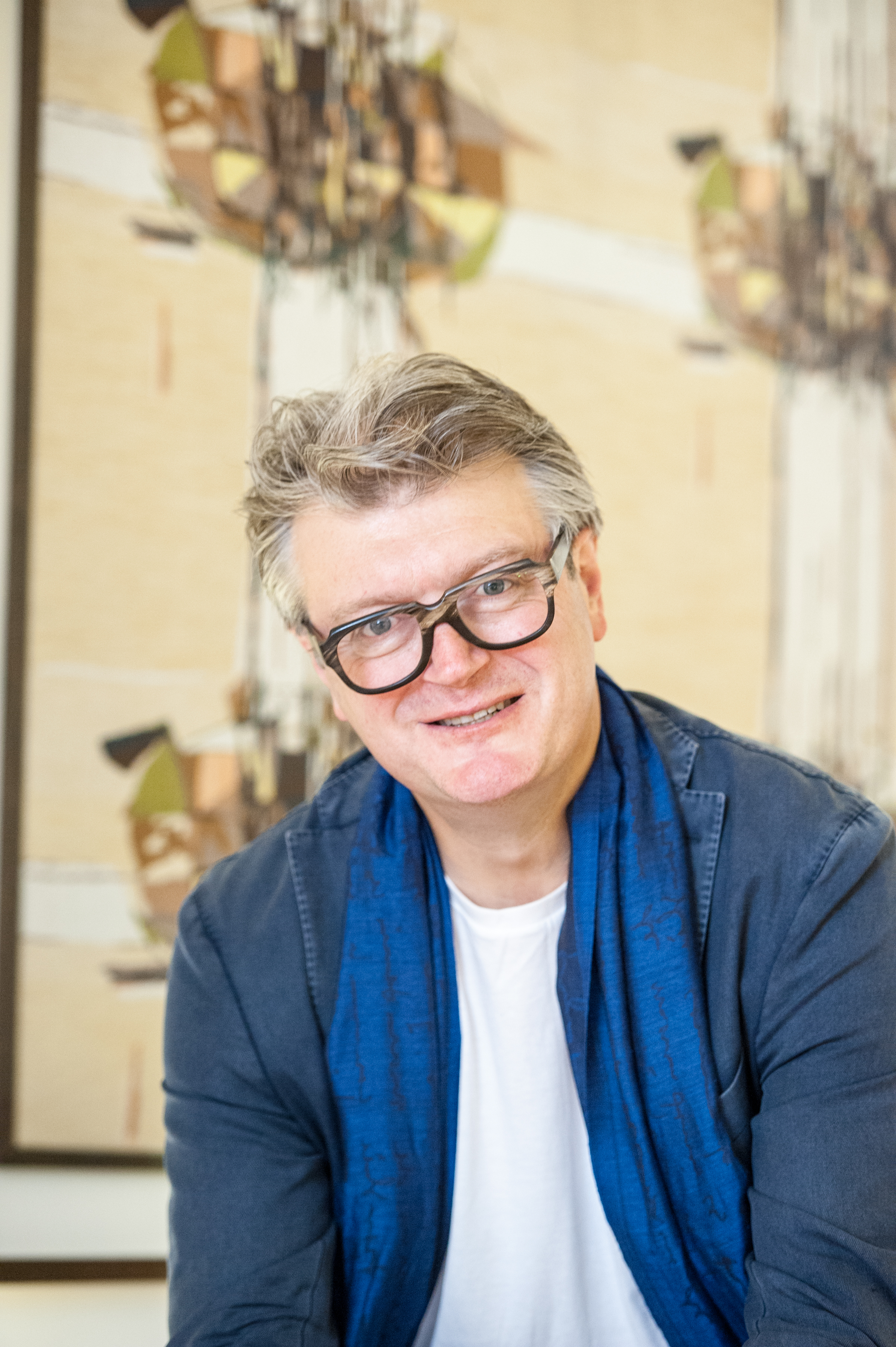
Ashley Gray
Leading specialist and curator in modern textiles and their design and history. A regular vetter at international fine art fairs, he has also served on international fair committees. He is on the advisory board of The Frances Neady Collection at FIT (Fashion Institute of Technology), New York. As a curator and archivist, he works with institutions and foundations on conservation and exhibition projects, most recently as co-curator of Material Textile: Modern British Female Designers and Material Textile: Creativity, History & Process with Messums Gallery; Common Thread at the New Art Centre; and From Bauhaus to our House at Cromwell Place. He is the curator of the exhibition Styled by Design (Cromwell Place, 18–23 April), which celebrates the innovation of Modernist textile design. Ashley’s Arts Society lectures include Textile revolution: post-war female designers; The post-war textile visionaries of modern art; A Yorkshire textile renaissance: Tom Heron, Cryséde and Cresta at the birth of Modernism; and Textiles of the W.P.A. & The New Deal 1935-1943. For more on Ashley’s work see graymca.com
Article Tags
JOIN OUR MAILING LIST
Become an instant expert!
Find out more about the arts by becoming a Supporter of The Arts Society.
For just £20 a year you will receive invitations to exclusive member events and courses, special offers and concessions, our regular newsletter and our beautiful arts magazine, full of news, views, events and artist profiles.
FIND YOUR NEAREST SOCIETY
MORE FEATURES
Ever wanted to write a crime novel? As Britain’s annual crime writing festival opens, we uncover some top leads
It’s just 10 days until the Summer Olympic Games open in Paris. To mark the moment, Simon Inglis reveals how art and design play a key part in this, the world’s most spectacular multi-sport competition



